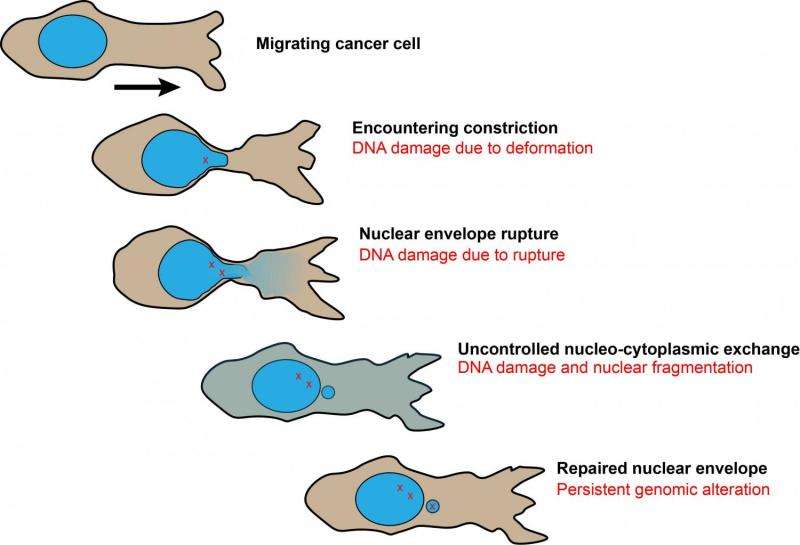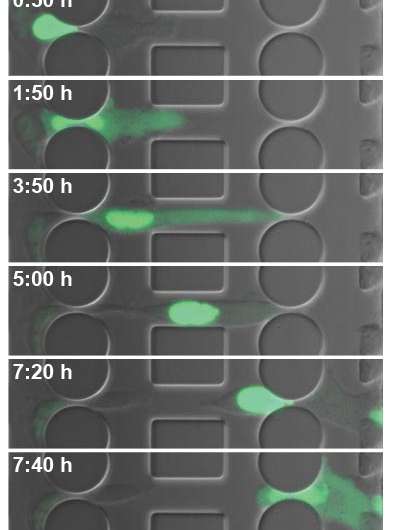Cancer cells show resilient nuclear rupture repair, but expose weakness in doing so

As different cells penetrate through tight, confining spaces within tissue, they often deform, causing their nuclei to rupture under the associated stress. A new study led by Cornell University engineers finds that cancer cells have a resilient ability to repair themselves, but the nuclear deformation and rupture can compromise the genomic integrity of the cancer cells, which could drive further cancer progression.
The study, "Nuclear envelope rupture and repair during cancer cell migration," will be published in the journal Science on Thursday, March 24 (please note embargo), and finds that:
- Nuclear deformation caused localized loss of nuclear envelope (NE) integrity, which led to the uncontrolled exchange of nucleo-cytoplasmic content, herniation of chromatin across the NE, and DNA damage. The incidence of NE rupture increased with cell confinement and with depletion of nuclear lamins, NE proteins that structurally support the nucleus.
- Tumor cells restored NE integrity using components of the endosomal sorting complexes required for transport-III (ESCRT-III) machinery.
- These events could be particularly prominent in cells with reduced levels of lamins, whose expression is deregulated in many cancers and often correlates with negative outcomes.
- While NE rupture, and resulting genomic instability, may promote cancer progression, it may also represent a particular weakness of metastatic cancer cells and an opportunity to develop novel anti-metastatic drugs by specifically targeting these cells, for example, by blocking NE repair and inhibiting DNA damage repair.

More information: "Nuclear envelope rupture and repair during cancer cell migration," Science, DOI: 10.1126/science.aad7297


















